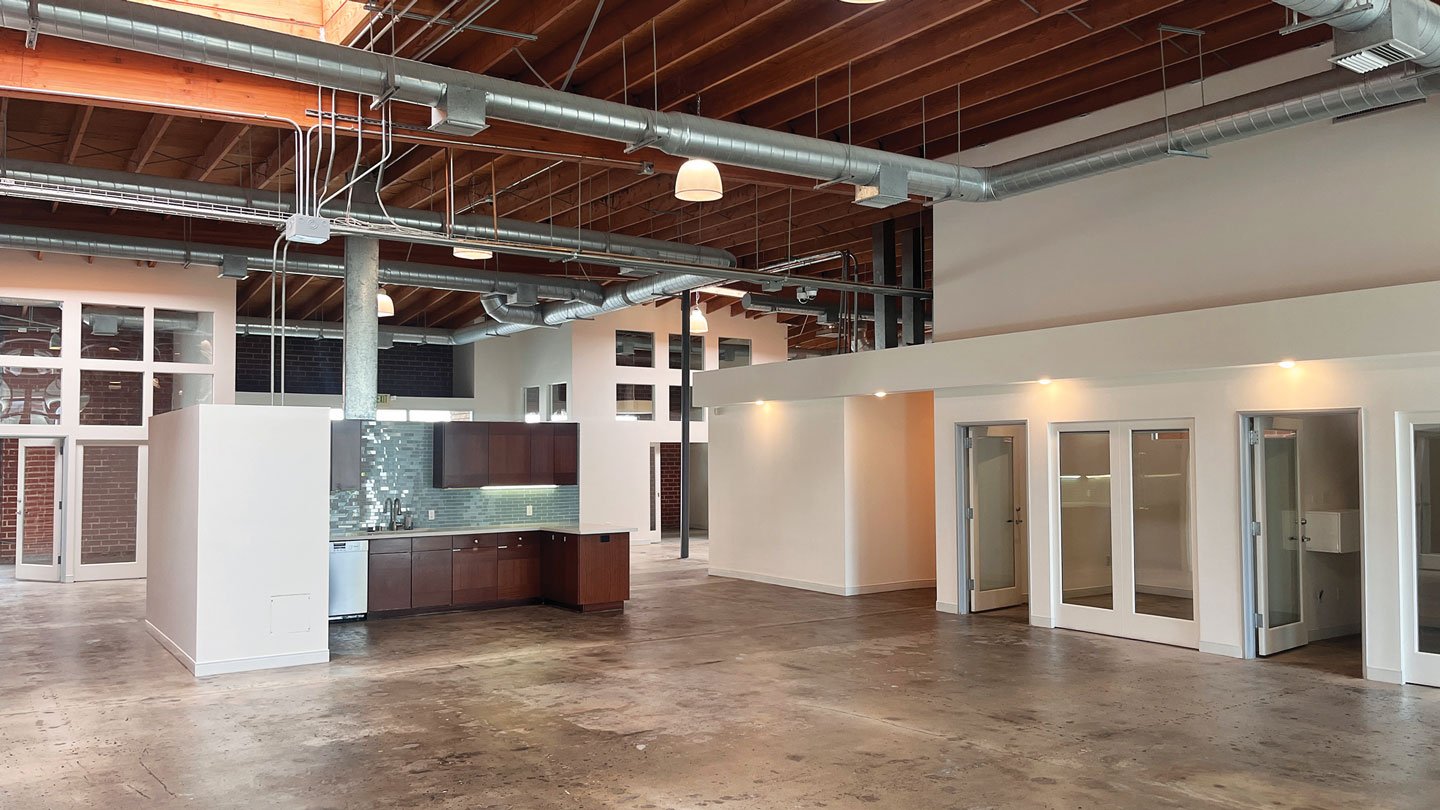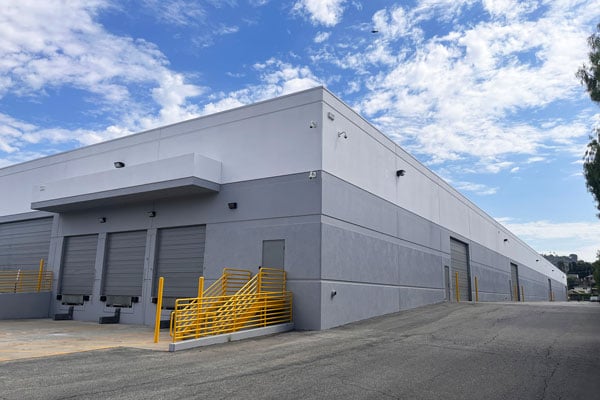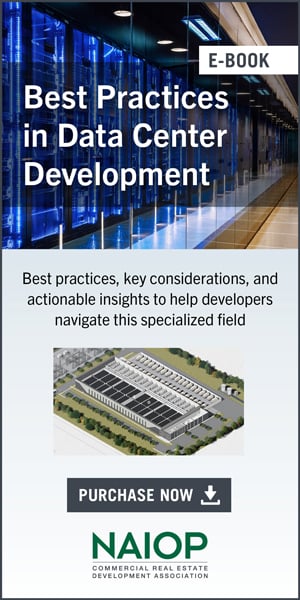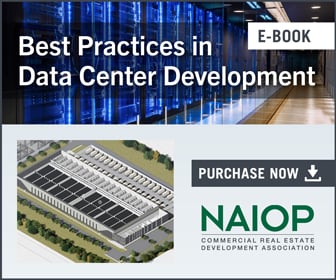
Differentiating for Tenants in a Crowded Industrial Marketplace
The future of industrial development will be informed by modern amenities and the pursuit of creative strategies.
What distinguishes one industrial asset from another in an increasingly competitive market? This question is becoming more pressing, especially considering the significant increase in industrial supply following the pandemic. National industrial vacancy rates averaged 8% at the end of 2024 according to Yardi Matrix, leaving behind the sub-4% rates that had become the norm over previous years. Tenants now have access to a diverse range of options, making it essential for property owners and investors to think strategically about their offerings.
As the needs of industrial tenants transform with the evolution of technology and continued growth — and with more industrial properties than ever to choose from — how can owners and investors set their properties apart? What creative tactics and strategies can they use to both attract and retain high-value partnerships in a crowded marketplace?
Future-forward Amenities
As companies in the industrial marketplace aim to reduce employee turnover, they are searching for creative ways to improve the worker experience. As a result, tenants are placing more value on the inclusion of modern workplace amenities that may have been deemed unnecessary or too luxurious in an industrial building in the past.

Good clear heights, ample power and a desirable location are all baseline requirements for long-term industrial investments. Photo courtesy of BLT Enterprises
For BLT Enterprises, a real estate development and investment company with a portfolio of 47 industrial and commercial properties in Southern California, any acquisition starts with a baseline quality check. An industrial asset must possess ample power and circulation, have generous clear heights and be in a desirable location. But after that, BLT President Rob Solomon has observed there is significant value in making improvements to industrial assets. This includes modernizing break rooms, kitchens and restrooms, as well as adding more natural lighting, hydration stations and comfortable spaces for employees to enjoy.
Renovations to include these types of amenities in industrial buildings can vary greatly in price, depending on the location, existing building, and cost of materials and labor. In the Los Angeles industrial market, BLT has seen renovations range between $200,000 and $1 million, depending on the size and location of the asset.
As manufacturers and logistics companies look to incorporate more automation and new technology, including artificial intelligence, into their businesses, their power needs are also increasing. Some larger facilities may now require heavier power capacities of 4,000 to 10,000 amps. Even smaller industrial buildings need more power than they once did, so developers and owners should consider building in (or adding in) higher electrical capacities to serve current and anticipated future needs.
EV Charging
Electric vehicle ports for both consumer and industrial use have increased. According to the Electrification Coalition, which tracks EV funding, charging stations for medium- and heavy-duty vehicles have benefited from increased funding under federal incentives. Perhaps due in part to this expansive federal funding, industrial and logistics companies have continued to invest in EV. However, property owners are finding it challenging to provide, as the infrastructure to support these additions is still largely in development.
Lisa Tamayo, BLT’s vice president of development, has found that as logistics tenants are converting their fleets to EV, they need significantly more space and power to recharge those vehicles. Depending on the property’s location, the process to gain permits and clearance for EV fleet charging can be lengthy, so it is important to start early and plan for a long-term investment.
FedEx has a goal of creating an entirely electric parcel pickup and delivery fleet by 2040 as it works toward carbon neutral operations. The company has already invested in building more than 500 charging stations across California, where its first 150 electric vans were initially deployed. These stations have the capability to support more than 1,000 EVs.
UPS has also been working on expanding its electric delivery fleet, with more than 1,000 electric and plug-in hybrid vehicles already on the road.
Over the past two years, Amazon has installed more than 17,000 chargers at about 120 warehouses around the U.S., making the retail giant the largest operator of private EV charging infrastructure in the country, according to Bloomberg.
While federal incentives may change in the future, consumer demand for EVs continues to rise, and many industrial tenants have already committed to a future that includes EV charging. Installing on-site EV charging stations for employees and fleet vehicles remains a key strategic move for developers looking to set their properties apart from the competition.
Thinking Outside the Box
In the current higher interest rate market, some industrial tenants enjoying growth from increased transaction volume may find that capital for expansion is too expensive to consider.
Rather than risk the relocation and potential loss of a tenant, BLT has employed a mutually beneficial growth strategy. When feasible, BLT has acquired land adjacent to an existing parcel and leased it back to the tenant in an effort to help the tenant expand without needing to go through the expense and complications of making an additional acquisition.
If the tenant eventually vacates, BLT will invest in value-add improvements to modernize the property and ready it for a new tenant. In some cases, these acquisitions can be transformed into higher-performing assets, such as cold storage or industrial outdoor storage facilities.
While BLT primarily owns assets in Southern California, a recent sale-leaseback opportunity with long-term Fortune 500 tenant PepsiCo presented itself. The tenant was looking to vacate a centrally located, 88,457-square-foot industrial warehouse on more than 8 acres in Las Vegas. After a significant due diligence process, BLT determined the asset was well positioned and unique in its low coverage (industrial properties with 30% or less improvement square feet compared to land square feet) and infill location.
BLT acquired the property and leased it back to the tenant on a short-term one-year lease. Once the tenant vacates, BLT plans to make significant improvements to the property, including upgrading on-site power and refurbishing the parking lot, maximizing the opportunity for outdoor storage.
As industrial users’ needs shift in a rapidly changing marketplace, it is crucial for owners to remain flexible and creative in their strategies to attract and retain tenants. Due diligence into the added value of improved amenities, as well as the possibility of acquiring new assets, will remain key to success.
Lukas Huberman is a partner at BLT Enterprises.




